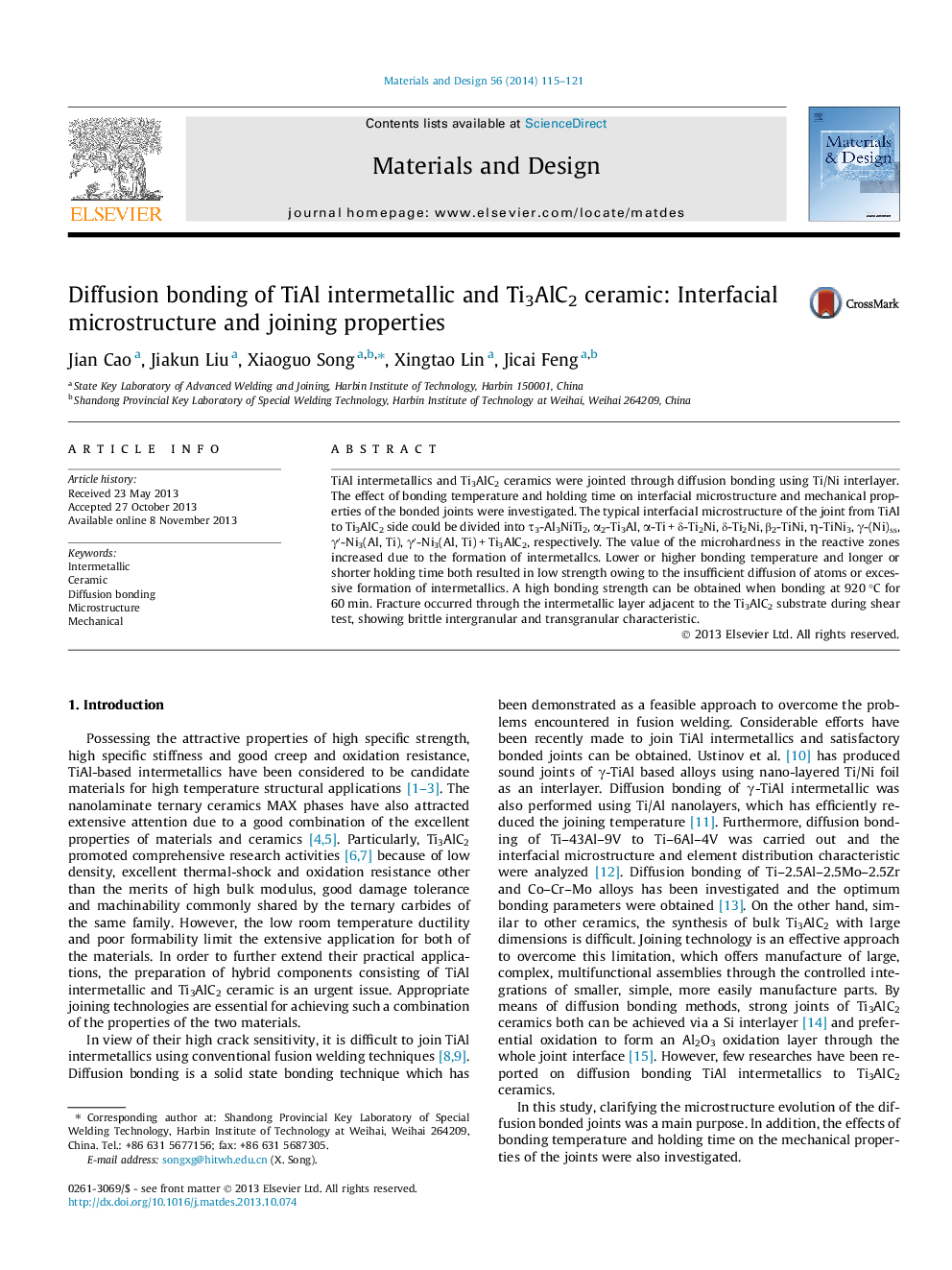| Article ID | Journal | Published Year | Pages | File Type |
|---|---|---|---|---|
| 829419 | Materials & Design (1980-2015) | 2014 | 7 Pages |
•TiAl intermetallic and Ti3AlC2 ceramic were diffusion bonded.•Interfacial microstructure of diffusion bonded joints was clarified.•Nanoindentation test was conducted to understand the performance of the reaction products.•The highest shear strength reached 151.6 MPa by the joints bonded at 920 °C for 60 min.
TiAl intermetallics and Ti3AlC2 ceramics were jointed through diffusion bonding using Ti/Ni interlayer. The effect of bonding temperature and holding time on interfacial microstructure and mechanical properties of the bonded joints were investigated. The typical interfacial microstructure of the joint from TiAl to Ti3AlC2 side could be divided into τ3-Al3NiTi2, α2-Ti3Al, α-Ti + δ-Ti2Ni, δ-Ti2Ni, β2-TiNi, η-TiNi3, γ-(Ni)ss, γ′-Ni3(Al, Ti), γ′-Ni3(Al, Ti) + Ti3AlC2, respectively. The value of the microhardness in the reactive zones increased due to the formation of intermetallcs. Lower or higher bonding temperature and longer or shorter holding time both resulted in low strength owing to the insufficient diffusion of atoms or excessive formation of intermetallics. A high bonding strength can be obtained when bonding at 920 °C for 60 min. Fracture occurred through the intermetallic layer adjacent to the Ti3AlC2 substrate during shear test, showing brittle intergranular and transgranular characteristic.
Graphical abstractFigure optionsDownload full-size imageDownload as PowerPoint slide
